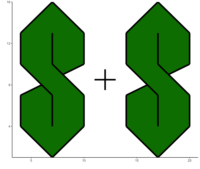To create my metric, I make use of a 2-parameter model pioneered by Viboud et. al. Specifically, it measures number of cases on day t, C(t), using the following parameters: r is a measure of growth rate, A is a constant, and the “deceleration of growth parameter” is given by ![]() , where p is between 0 and 1. Specifically, p has unique properties. If p is equal to 0, then the cumulative number of cases grows linearly. If p is equal to 1, then the cumulative number of cases grows exponentially. Everything in-between displays sub-exponential growth. Cases with sub-exponential growth can be modeled using the following formula:
, where p is between 0 and 1. Specifically, p has unique properties. If p is equal to 0, then the cumulative number of cases grows linearly. If p is equal to 1, then the cumulative number of cases grows exponentially. Everything in-between displays sub-exponential growth. Cases with sub-exponential growth can be modeled using the following formula:
r and p can be estimated by applying current data and nonlinear least squares (NLS) to the above formula. In practice, as p approaches 0, a plot of cumulative cases is better represented by a linear model than an exponential one. Conversely, as p approaches 1, a plot of cumulative cases is better represented by an exponential model. This can be seen by plotting for each country the difference in the r-squared of a linear model and the r-squared of an exponential model against p. We see a strong correlation (correlation = -0.89). Somewhere around p = 0.5, a linear model better explains the data:
As such, p can be used as a “metric” of whether the cumulative case profile of a country can be represented by a linear model or an exponential one. As we know, there is a large difference between exponential and linear growth — this difference is so stark that r, or the growth rate, is almost irrelevant. A higher p indicates a better fit to an exponential model than a linear one, and vice versa. Some examples may help further illustrate this point.
Spain (p = 1.00, ~8,000 cases):
Bahrain (p = 0.52, 214 cases):



